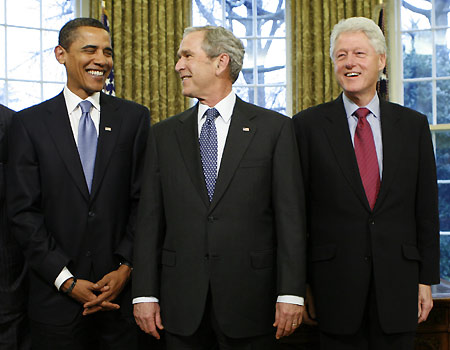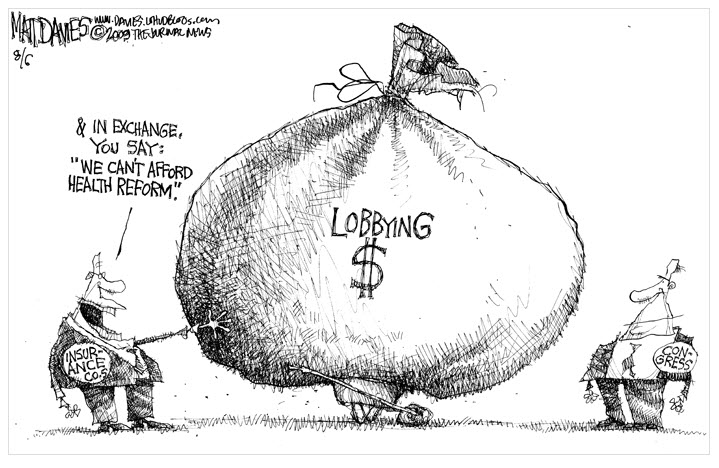Lobbyists:
An interest group has engaged your law firm, Equality, Truth and Justice, LLP, to raise support for its cause. On Tuesday, you researched the interest group. You discovered many facts, such as the group's mission and the politicians it endorses.
Now comes the hard part. You must create an effective, informative grassroots campaign that both rallies your lobby's rank-and-file members and informs the general populace. You will not make use of direct lobbying in this campaign, simply because ETJ's contacts in the House and the Senate have all just been voted out of office (they were all democrats). Oh well.
You will need to use the following resources to create your grassroots campaign:
- Your lobby's website
- Your answers from yesterday
- Your textbook
- Grassroots campaign organization websites:
- A news article on the "Art of Street Canvassing"
- A Washingtonian article on DC's Top 50 Lobbyists. ETJ might not be as famous as these people, but their experience may provide a model for you.
The following is a list of techniques you might use to organize your lobby's base:
- hosting house meetings or parties
- having larger meetings
- putting up posters
- talking with pedestrians on the street (often involving informational clipboards)
- gathering signatures for petitions
- mobilizing letter-writing, phone-calling, and emailing campaigns
- setting up information tables in high-traffic areas
- raising money from many small donors for political advertising or campaigns
- organizing large demonstrations
- asking individuals to submit opinions to media outlets and government officials
- holding get out the vote activities, which include the practices of reminding people to vote and transporting them to polling places.
- using online social networks to organize virtual communities
Part 1: The Grassroots. Follow the following steps to create an effective grassroots campaign. Complete this in one e-mail to me (with each partner's name included). It is due at the end of the period, and is worth
35 points.
- Identify the key issue(s) ETJ will focus on in your campaign. Explain why you think these are the ones the lobby must communicate to the public. (3 points issue, 7 points explanation, 10 points total)
- Create a plan to coordinate the lobby's rank-and-file members to best utilize their abilities. This should tell the average person exactly what he/she needs to do in order to help your interest group. Your plan should include a minimum of 5 bullet points. (1 point each bullet, 5 points total)
- Create a plan to distribute information about your lobby to the general public. (10 points)
- Think about the ways in which YOU get information in real life (i.e., not in the classroom).
- Ask your self questions like:
- "Would I actually research my lobby's cause without an assignment?"
- "How lazy are people, really?"
- "How can I distribute my lobby's information over the widest base possible?"
- Can you get celebrities, politicians or well-known corporations involved? How? When you get them involved, how can you best put their talents to use. Answer this question using the name of a celebrity you will work with. (5 points)
- How can you ensure that the short-term gains made by your grassroots movement can be made relevant in the long-term policy-making process? How can you make this matter for a long time, not just in the immediate future? (5 points)
Part 2: Informing the General Population. How will you inform the general population of your lobby's goals? How will you encourage free-riders to get involved? Create a visual that appeals to a broad base. This could be:
- Two bumper stickers that tell people what they should vote for, what your group wants to accomplish, etc.
- A (fake) social networking page that enables rank-and-file members and free-riders to get involved. Think Twitter, Facebook, etc.
- Flyers you can hang up to inform and encourage
- An informative handout and a petition your rank-and-file can use to influence people on the street
Be creative, but also realistic. If your visual does not appeal to you, it will not appeal to the masses. Your visual should include:
- The name of your lobby
- Your lobby's purpose
- What you want people to do -- Protest? Vote? Not Drink and Drive? Etc.?
- Information for how people can find out more or get involved (a website, address, phone number, etc.)
 Review the following information in preparation for your exam. Use your textbook and class notes.
Review the following information in preparation for your exam. Use your textbook and class notes.




